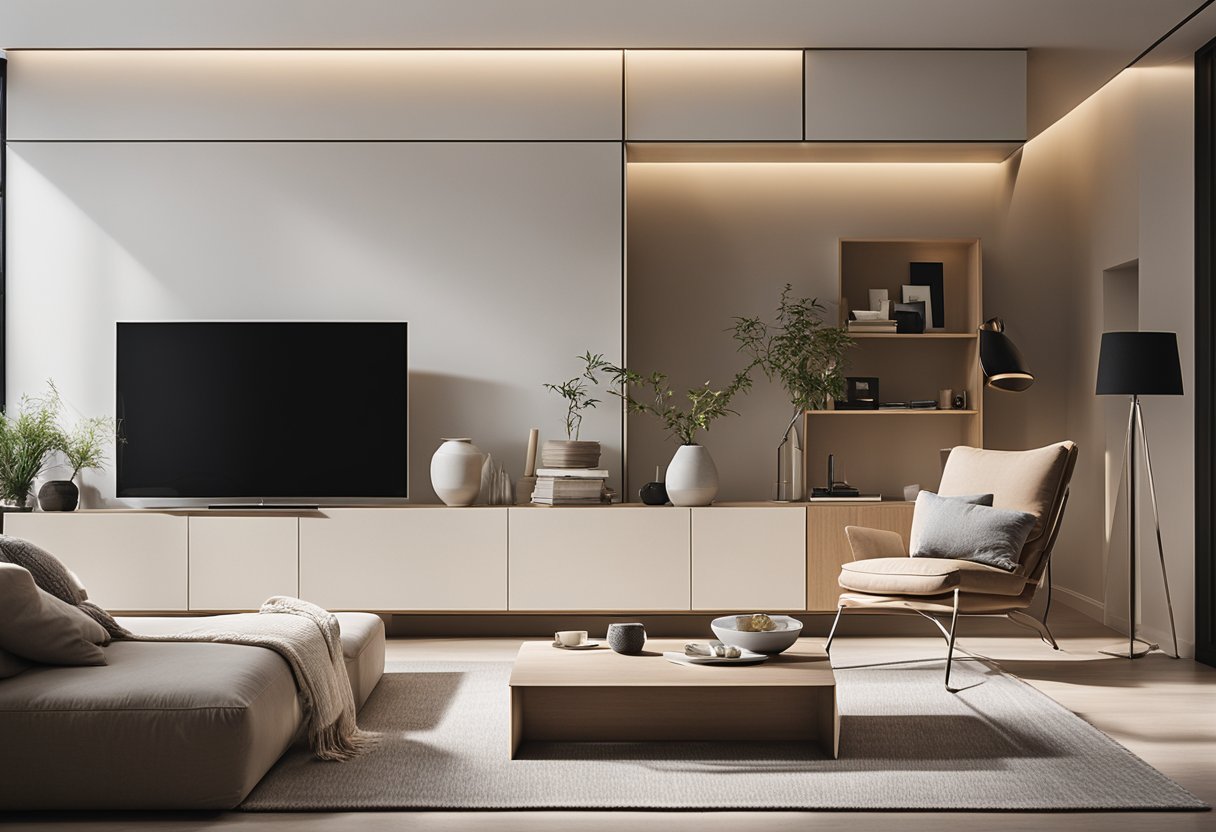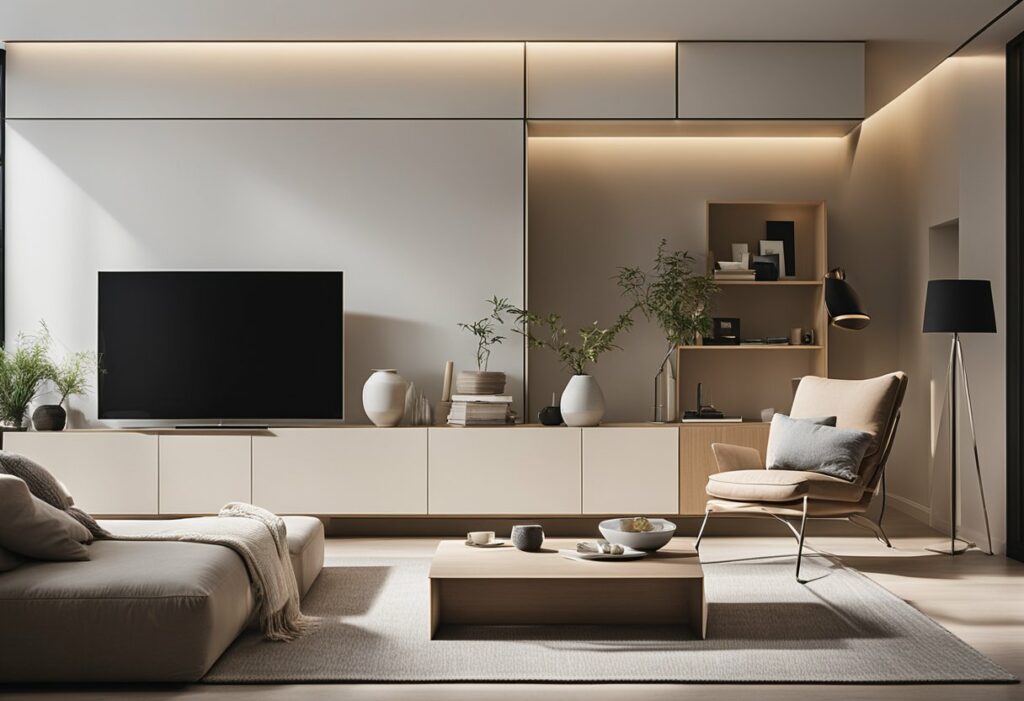Interior Design Project Names: Creative Ideas for Naming Your Next Project
Are you looking for an interior design project name that perfectly captures the essence of your work? A name that is memorable, catchy, and unique can help make your brand stand out and attract more clients. Choosing a name for your interior design project can be a challenging task, but it is also an exciting opportunity to showcase your creativity.

When it comes to interior design, style, comfort, and simplicity are key factors that can make or break a project. A good interior design project name should reflect these elements and convey a sense of your brand’s personality and values. Whether you are working on a residential or commercial project, the right name can help you establish a strong brand identity and connect with your target audience.
So, how do you go about conceptualising and executing the perfect interior design project name? In this article, we will explore some tips and tricks to help you come up with a name that truly represents your brand and resonates with your clients. We will also showcase some examples of successful interior design project names to inspire you.
Conceptualising Your Interior Design Project

When it comes to conceptualising your interior design project, there are several factors to consider. From defining your style and era to balancing functionality and aesthetics, each decision you make will ultimately contribute to the overall feeling and concept of your project. In this section, we’ll explore some key considerations to keep in mind as you embark on your interior design journey.
Defining Style and Era
One of the first steps in conceptualising your interior design project is defining your style and era. Are you drawn to modern, traditional, art deco, contemporary, or classic design? Each of these styles has its own unique characteristics and can set the tone for the rest of your project. Consider browsing through portfolios of designers or interior designers whose work you admire for inspiration.
Incorporating Nature and Architecture
Incorporating elements of nature and architecture can also play a significant role in the concept of your interior design project. Organic modernism, for example, emphasises the use of greenery and natural light to create a sense of harmony between the indoors and outdoors. Consider how you can incorporate these elements into your project to create a feeling of balance and tranquillity.
Colour and Texture: Crafting the Visual Experience
Colour and texture are also essential in crafting the visual experience of your interior design project. Bold, refined, and clean lines can create a sense of detail and sophistication, while contrasting textures can add depth and interest to your space. Consider how you can use colour and texture to create a cohesive and visually stunning concept.
Balancing Functionality and Aesthetics
While aesthetics are undoubtedly important, it’s also essential to balance functionality and aesthetics in your interior design project. Consider how you can create a space that not only looks beautiful but is also comfortable and practical. This will ensure that your space is not only visually stunning but also functional for everyday use.
The Role of Furniture and Decor
Finally, the role of furniture and decor cannot be overstated in conceptualising your interior design project. Your furniture and decor choices will ultimately serve as the focal point of your space, so it’s essential to choose pieces that align with your overall concept. Whether you’re drawn to art nouveau, maximalist, eclectic, rustic, or modern farmhouse design, your furniture and decor choices can help bring your vision to life.
By considering these key factors, you can begin to create a concept for your interior design project that reflects your creativity and personal style. Whether you’re in China or Los Angeles, defining your era and style, incorporating nature and architecture, crafting the visual experience, balancing functionality and aesthetics, and choosing the right furniture and decor can all help you create a space that is both beautiful and functional.
Executing and Showcasing Interior Design Projects

As an interior designer, executing and showcasing your interior design projects is key to building your brand and reputation. In this section, we will discuss some essential strategies that will help you manage your projects, create a cohesive portfolio, and stay up-to-date with global inspirations and market trends.
Project Management for Designers
Project management is a crucial component of interior design projects, helping you to keep the project on track and ensure that it meets the client’s requirements. By managing your projects effectively, you can ensure that you complete your projects on time and within budget. You can use project management software like Asana, Trello, or Basecamp to keep track of your tasks, deadlines, and budgets.
Creating a Cohesive Portfolio
Your portfolio is your showcase to the world, and it should reflect your design style, creativity, and expertise. A well-curated portfolio can help you attract potential clients, showcase your work, and stand out from the competition. To create a cohesive portfolio, you should include a variety of interior design projects, including residential, commercial, raw, finishes, brick, beams, partitions, and more. You can also add your personal touch by including a brief description of each project, highlighting the challenges and solutions you faced.
Global Inspirations and Market Trends
Staying up-to-date with global inspirations and market trends is essential for any interior designer who wants to stay relevant and competitive in the industry. You can get inspiration from cultural trends, architects, interior architecture, and leading design firms like Gensler. You can also attend trade shows, exhibitions, and learning events to stay informed about the latest trends and innovations. For example, the Chengdu, Shanghai, and London Design Weeks are excellent opportunities to learn about the latest design trends and network with other designers.
In conclusion, executing and showcasing your interior design projects requires a variety of skills, including project management, portfolio curation, and staying up-to-date with global inspirations and market trends. By following these essential strategies, you can create a successful interior design business that reflects your creativity, expertise, and passion for design.
Frequently Asked Questions

What are some creative names for interior design projects?
When it comes to naming your interior design project, creativity is key. You want a name that stands out and accurately represents the project. Some examples of creative interior design project names include “Urban Oasis,” “Bohemian Rhapsody,” and “Coastal Retreat.”
How can I come up with a catchy name for my interior design firm?
Naming your interior design firm can be a daunting task, but it’s important to choose a name that accurately represents your brand and is memorable. To come up with a catchy name, consider brainstorming with a group of friends or colleagues, researching industry trends, or hiring a professional naming consultant.
Could you suggest some unique interior design project titles for students?
If you’re a student looking for a unique interior design project title, consider using a play on words or incorporating a theme. Some examples include “Designing for the Future,” “Sustainable Spaces,” or “Designing for Diverse Communities.”
What are the elements of a successful interior design project name?
A successful interior design project name should be memorable, accurately represent the project, and be easy to pronounce and spell. It should also be unique and not too similar to existing project names.
Where can I find inspiration for naming my interior design concepts?
Inspiration for naming your interior design concepts can come from anywhere – nature, literature, fashion, or even food. Consider brainstorming with a group of colleagues or researching industry trends for inspiration.
What are the characteristics of memorable interior design company names?
Memorable interior design company names are typically short, easy to pronounce and spell, and accurately represent the brand. They often incorporate unique words or phrases and have a strong visual appeal. Some examples of memorable interior design company names include “Studio McGee,” “Emily Henderson Design,” and “Amber Interiors.”



